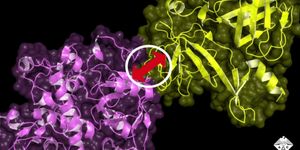Deep Learning Improves Cloud Detection Methods
To understand the workings of earth systems, atmospheric scientists often search data images for the clouds as part of their research. However, the manual work involved in the labeling of data images is time-consuming and so more than often scientist rely heavily on automatic processing techniques based on cloud detection algorithms. Unfortunately, the output generated by these algorithms are not always as exact as the researchers desire it to be.
Clouds come in all shapes and sizes. Now, a model based on a subset of machine learning known as ‘Deep Learning’ may help detect the finer details in cloud data.
Credit: Adriel Kloppenburg on Unsplash via Pacific Northwest National Laboratory
"The current algorithm identifies the clouds using broad brushstrokes," says co-principal investigator on the project and Earth scientist, Donna Flynn. "We need to more accurately determine the cloud's true top and base and to distinguish multiple cloud layers."
To combat such a hurdle, scientists at the Department of Energy's Pacific Northwest National Laboratory have opted to try a subset of machine learning known as deep learning in hopes team to find better ways of identifying clouds in LIDAR data (Light Detection and Ranging) instead of the present physics-based algorithms.
"An advantage of the deep learning model is transfer learning," says Erol Cromwell, a computational scientist and co-principal investigator at Pacific Northwest National Laboratory. "We can train the model further with data from Oliktok to make its performance more robust."
The researchers found out that the new deep learning model gave them more accurate answers in just a fraction of the time. During training and testing of the model, they first started labeling LIDAR data images. The model was found to learn through self-feedback by improving through each cycle and adjusting its calculations accordingly by comparing its own work against results generated by manual labor.
Learn more on how deep learning tackles cloud detection:
"Reducing sources of uncertainty in global model predictions is especially important to the atmospheric science community," states Flynn. "With its improved precision, deep learning increases our confidence…Plus, it gives us more time to be outside looking at real clouds!"









